Abstract
The association of sociodemographic and family composition data with obesity was studied in 1213 black and 1166 white girls, ages 9 and 10, enrolled in the National Heart, Lung, and Blood Institute's Growth and Health Study. Obesity was defined as body mass index at or greater than age- and sex-specific 85th percentile as outlined in the Second National Health and Nutrition Examination Survey. The prevalence of obesity was higher for pubertal girls than for prepubertal girls and for girls with older mothers/female guardians. As odds ratio of 1.14 was observed for each 5-year increase in maternal age. Obesity was less common for girls with more siblings; the odds for obesity decreased by 14% for each additional sibling in the household. In blacks, the prevalence of obesity was not related to parental employment or to parental education. In whites, the odds of obesity were higher for girls with no employed parent/guardian in the household and for girls with parents or guardians with lower levels of educational attainment. Examining the associations between sociodemographic factors and risk of childhood obesity provides important clues for understanding racial differences in obesity, a major risk factor for coronary heart disease.
Full text
PDF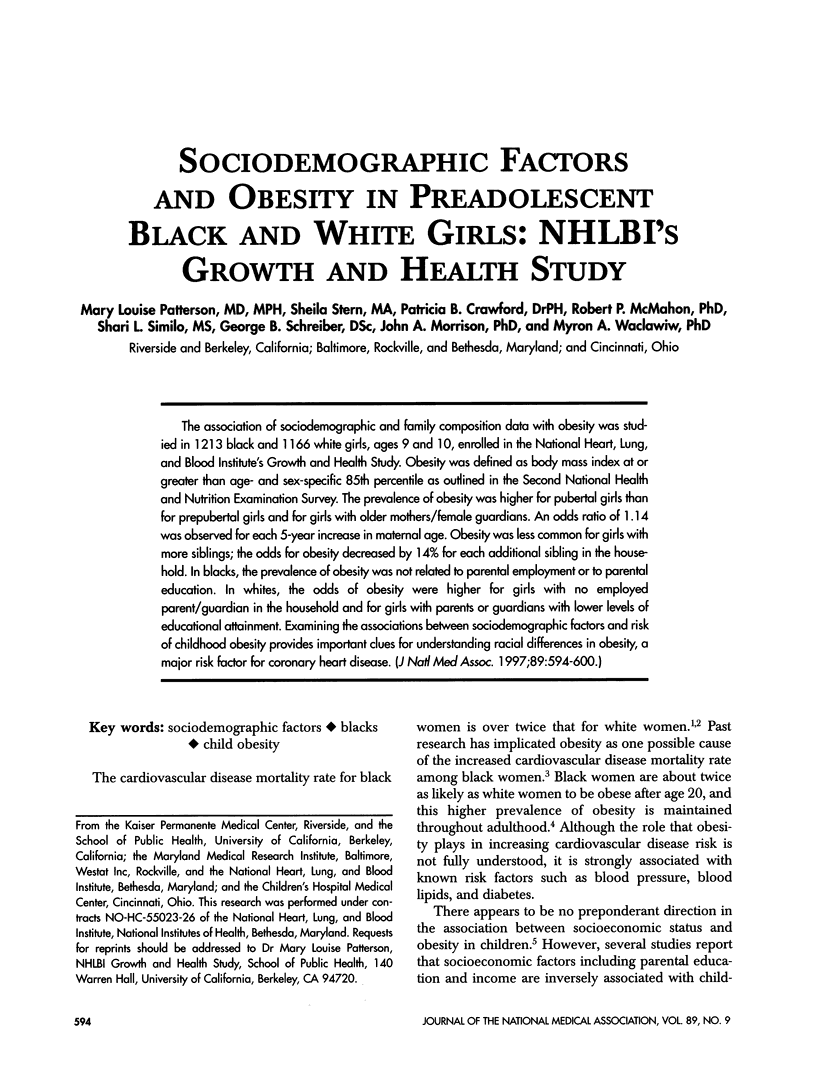

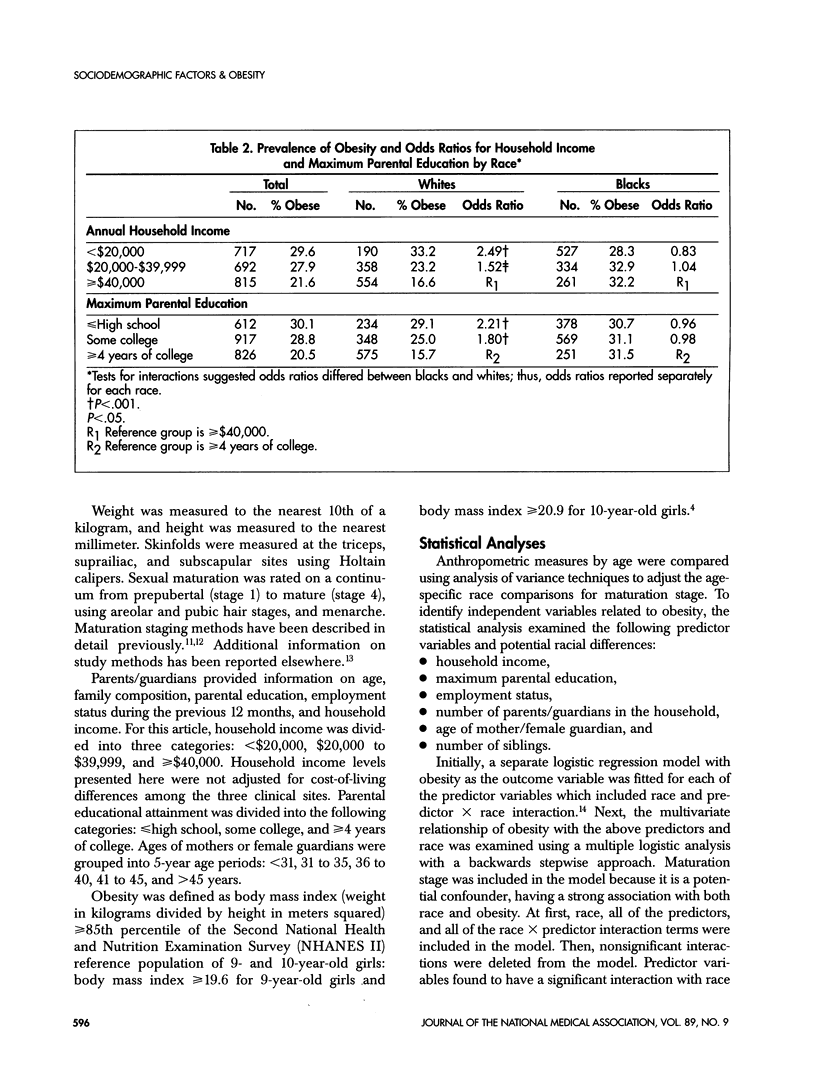
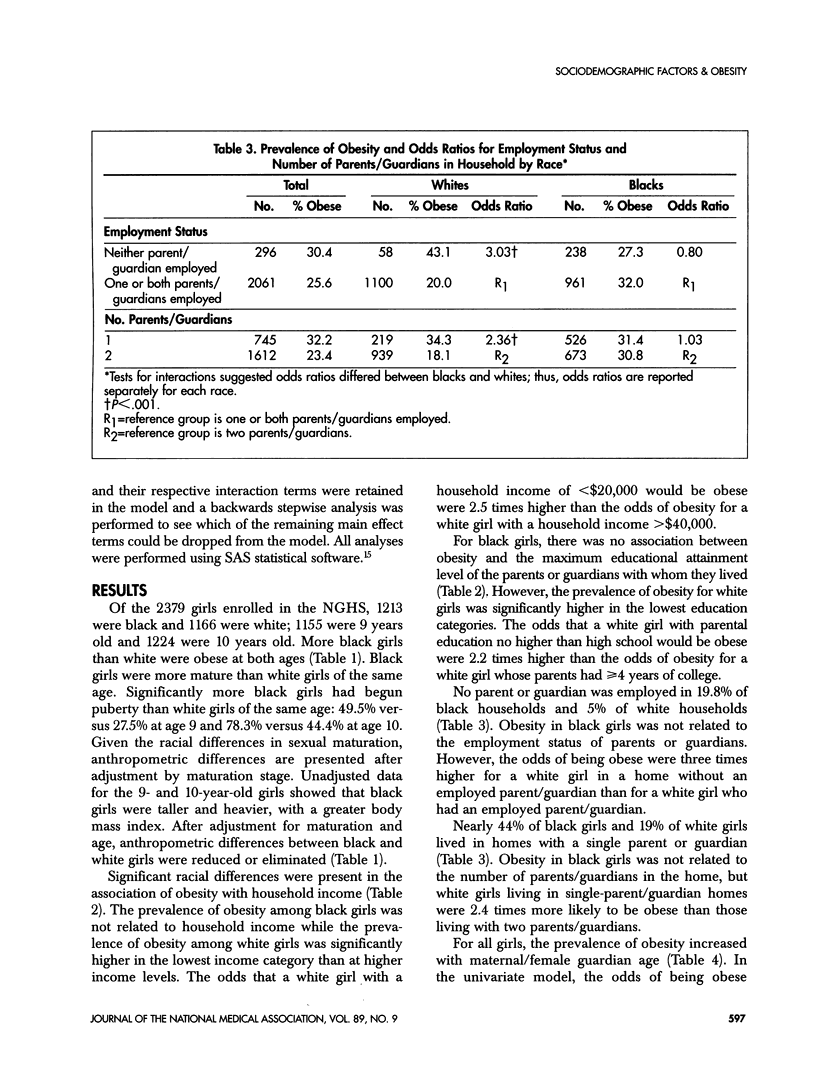
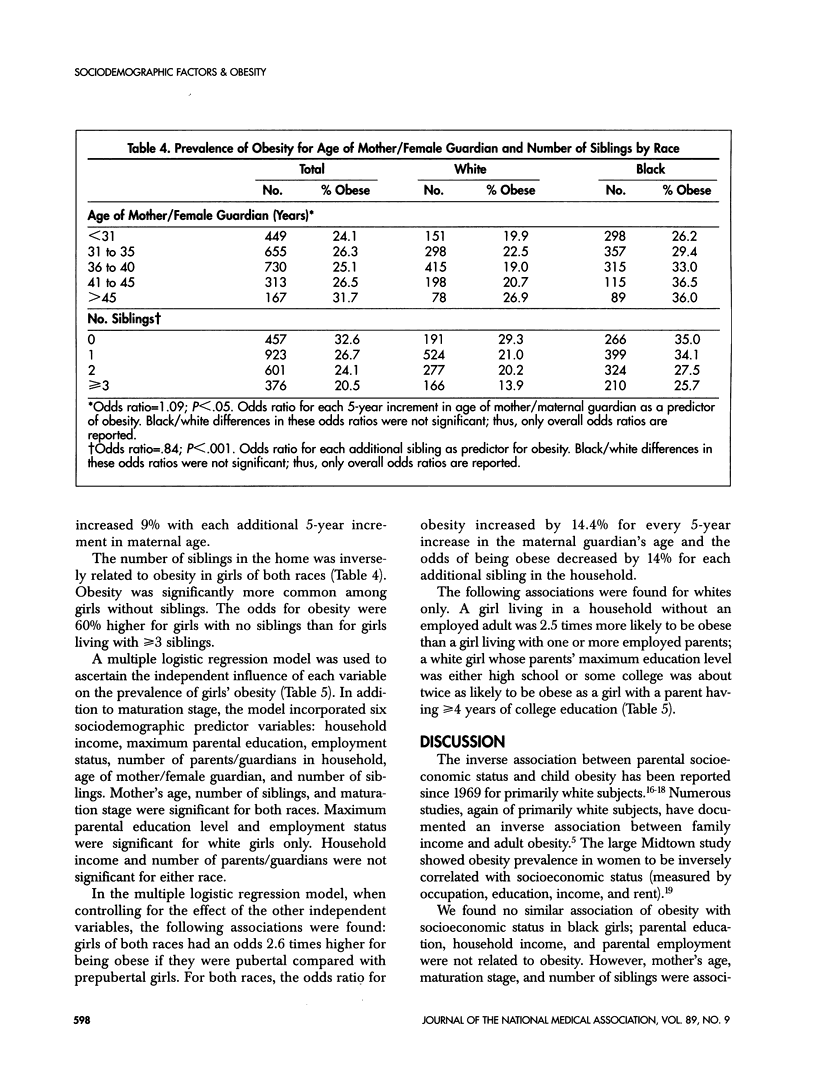
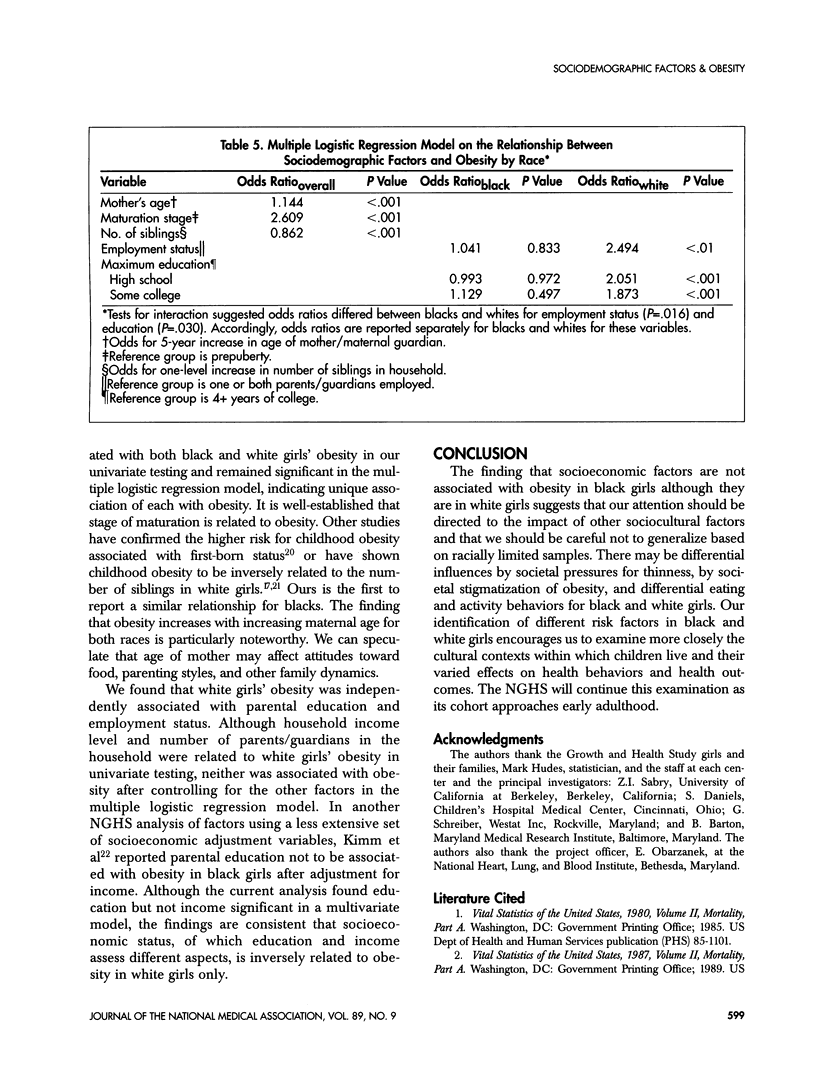
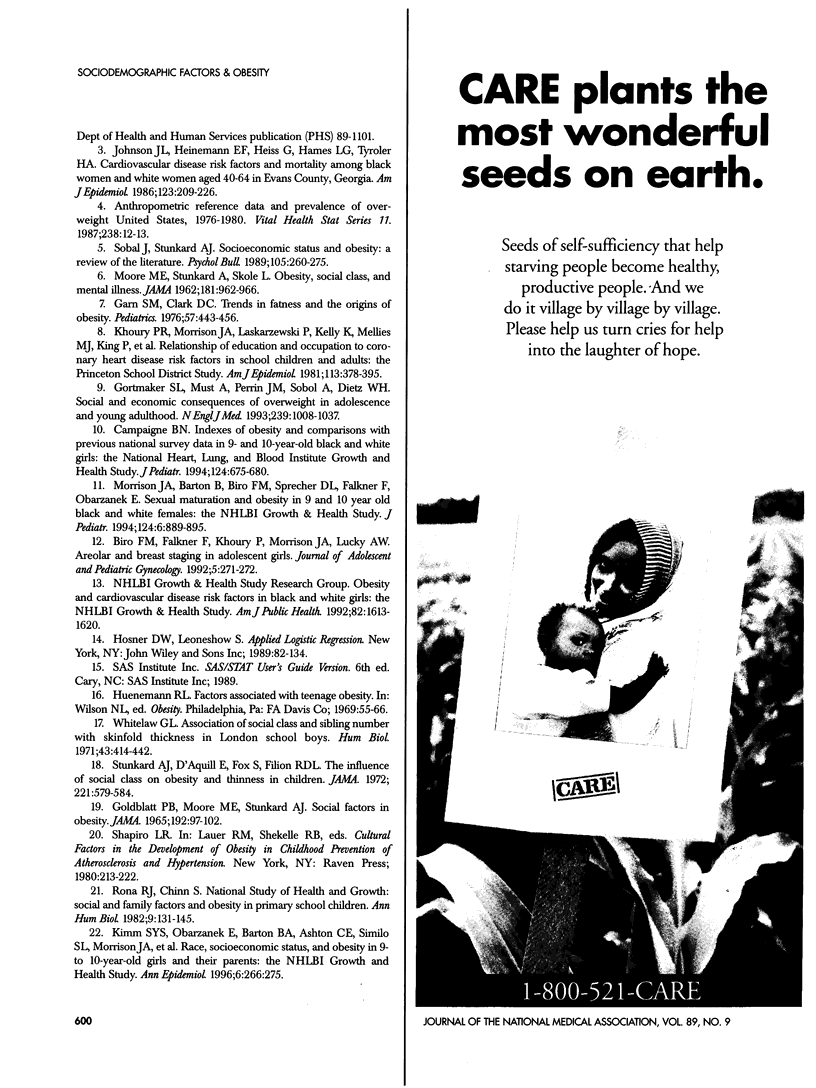
Selected References
These references are in PubMed. This may not be the complete list of references from this article.
- Campaigne B. N., Morrison J. A., Schumann B. C., Falkner F., Lakatos E., Sprecher D., Schreiber G. B. Indexes of obesity and comparisons with previous national survey data in 9- and 10-year-old black and white girls: the National Heart, Lung, and Blood Institute Growth and Health Study. J Pediatr. 1994 May;124(5 Pt 1):675–680. doi: 10.1016/s0022-3476(05)81354-x. [DOI] [PubMed] [Google Scholar]
- Garn S. M., Clark D. C. Trends in fatness and the origins of obesity Ad Hoc Committee to Review the Ten-State Nutrition Survey. Pediatrics. 1976 Apr;57(4):443–456. [PubMed] [Google Scholar]
- Gortmaker S. L., Must A., Perrin J. M., Sobol A. M., Dietz W. H. Social and economic consequences of overweight in adolescence and young adulthood. N Engl J Med. 1993 Sep 30;329(14):1008–1012. doi: 10.1056/NEJM199309303291406. [DOI] [PubMed] [Google Scholar]
- Johnson J. L., Heineman E. F., Heiss G., Hames C. G., Tyroler H. A. Cardiovascular disease risk factors and mortality among black women and white women aged 40-64 years in Evans County, Georgia. Am J Epidemiol. 1986 Feb;123(2):209–220. doi: 10.1093/oxfordjournals.aje.a114230. [DOI] [PubMed] [Google Scholar]
- Khoury P. R., Morrison J. A., Laskarzewski P., Kelly K., Mellies M. J., King P., Larsen R., Glueck C. J. Relationships of education and occupation to coronary heart disease risk factors in school children and adults: the Princeton School District Study. Am J Epidemiol. 1981 Apr;113(4):378–395. doi: 10.1093/oxfordjournals.aje.a113106. [DOI] [PubMed] [Google Scholar]
- Kimm S. Y., Obarzanek E., Barton B. A., Aston C. E., Similo S. L., Morrison J. A., Sabry Z. I., Schreiber G. B., McMahon R. P. Race, socioeconomic status, and obesity in 9- to 10-year-old girls: the NHLBI Growth and Health Study. Ann Epidemiol. 1996 Jul;6(4):266–275. doi: 10.1016/s1047-2797(96)00056-7. [DOI] [PubMed] [Google Scholar]
- MOORE M. E., STUNKARD A., SROLE L. Obesity, social class, and mental illness. JAMA. 1962 Sep 15;181:962–966. doi: 10.1001/jama.1962.03050370030007. [DOI] [PubMed] [Google Scholar]
- Rona R. J., Chinn S. National study of health and growth: social and family factors and obesity in primary schoolchildren. Ann Hum Biol. 1982 Mar-Apr;9(2):131–145. doi: 10.1080/03014468200005601. [DOI] [PubMed] [Google Scholar]
- Sobal J., Stunkard A. J. Socioeconomic status and obesity: a review of the literature. Psychol Bull. 1989 Mar;105(2):260–275. doi: 10.1037/0033-2909.105.2.260. [DOI] [PubMed] [Google Scholar]
- Stunkard A., d'Aquili E., Fox S., Filion R. D. Influence of social class on obesity and thinness in children. JAMA. 1972 Aug 7;221(6):579–584. [PubMed] [Google Scholar]
- Whitelaw A. G. The association of social class and sibling number with skinfold thickness in London schoolboys. Hum Biol. 1971 Sep;43(3):414–420. [PubMed] [Google Scholar]


